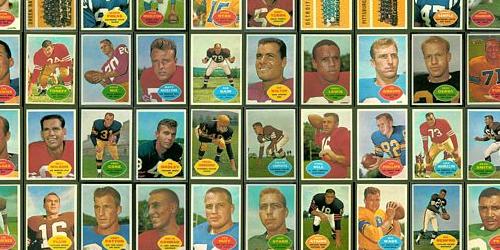December 2nd, 2010 |
Published in
General Collecting Info, New in the Gallery
Today I added virtual uncut sheets of 1948 Bowman football cards to the Vintage Football Card Gallery. The numbering of the cards on the sheets shows why some of them are short prints, and the positions of the cards on the sheets shows why some are scarce in high grade.
(Click the image to see the uncut sheet page.)
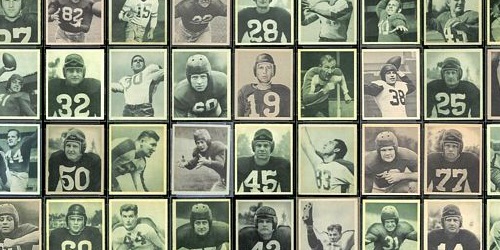
August 17th, 2010 |
Published in
Football Card Trivia, New in the Gallery
Today I put together another virtual uncut sheet, this time for 1958 Topps football cards. Once again, the cards that are scarcest in high grade are on the edges of the sheet.
(Click on the image to see the whole sheet.)
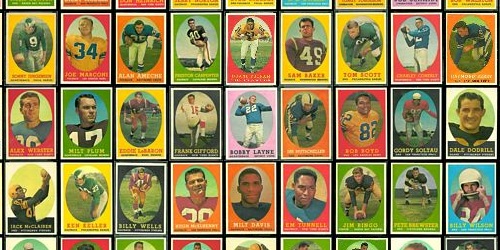
August 10th, 2010 |
Published in
New in the Gallery
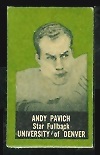 Over the weekend I added most of the 1950 Topps Felt Back cards to the Vintage Football Card Gallery. As I wrote in T is for Topps, Part 1, these are homely cards, and they are even homelier in lower grades. Because they are colored to the edges, any wear on the edges stands out, and even cards in good shape can have loose threads hanging off the felt.
Over the weekend I added most of the 1950 Topps Felt Back cards to the Vintage Football Card Gallery. As I wrote in T is for Topps, Part 1, these are homely cards, and they are even homelier in lower grades. Because they are colored to the edges, any wear on the edges stands out, and even cards in good shape can have loose threads hanging off the felt.
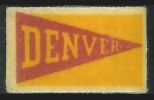 The cards do have their positive qualities, though: that they actually have felt on the back is kind of cool, and the terms describing the players (e.g., “Brainy Quarterback”) are unique and fun. The set includes the rookie cards of two Pro Football Hall of Famers, Ernie Stautner and Lou Creekmur; and two famous college coaches, Joe Paterno and Darrell Royal.
The cards do have their positive qualities, though: that they actually have felt on the back is kind of cool, and the terms describing the players (e.g., “Brainy Quarterback”) are unique and fun. The set includes the rookie cards of two Pro Football Hall of Famers, Ernie Stautner and Lou Creekmur; and two famous college coaches, Joe Paterno and Darrell Royal.
The cards were printed twenty-five to a sheet, with all red cards on one sheet, all blue cards on another sheet, etc. You can see a complete red sheet and a complete brown sheet, as well as their backs, on the Memory Lane Inc. web site.
April 26th, 2010 |
Published in
Football Card Trivia, Interesting Message Board Threads, New in the Gallery
Over the weekend I added 1974 Parker Brothers cards to the Vintage Football Card Gallery. These fifty cards were pieces in a game called Parker Brothers Pro Draft. They were printed by Topps for Parker Brothers, and they closely resemble 1974 Topps regular issue cards. A message board thread at tradingcardcentral.com has some nice photos of the game. (Note that the box cover pictures 1973 Topps cards, not 1974.)
The object of the Pro Draft game was to assemble a complete starting offensive lineup, so the set of Parker Brothers includes only offensive players: five quarterbacks, five tight ends, five centers, ten running backs, eight guards, eight tackles, and nine wide receivers. (Topps labeled Dan Dierdorf a guard, though he played tackle from 1972 to 1981.) The cards are not ordered sequentially; they have the same numbers as the corresponding cards in the regular 1974 Topps set. The only differences between the Parker Brothers cards and the Topps cards are:
- Six of the Parker Brothers cards have different images on the front than their counterparts in the Topps set.
- Cards from early editions of the Pro Draft game have 1972 stats on the back instead of 1973 stats.
- Cards from early editions of the game also have two asterisks in the copyright line on the back, whereas their counterparts in the regular Topps set have just one asterisk. (Complicating matters, some of the regular 1974 Topps cards also have two asterisks in the copyright line, but those cards don’t have counterparts in the Parker Brothers set. According to Beckett.com, the regular Topps cards with two asterisks are 26, 129, 130, 156, 162, 219, 265-364, 367-422, and 424-528.)
- Cards from late editions of the Pro Draft game have 1973 stats and one asterisk on the back. Except for the six that have different pictures on the front, the late edition Parker Brothers cards are indistinguishable from the regular 1974 Topps cards.
Here are the six cards whose fronts differ between the Parker Brothers set and the regular 1974 Topps set. Click on any picture to see a slightly bigger image.
| Number |
1974 Parker Brothers |
1974 Topps |
| 23 |
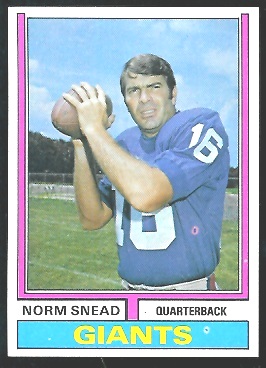 |
 |
| 49 |
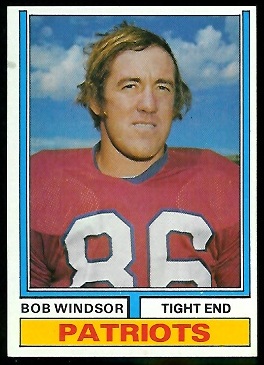 |
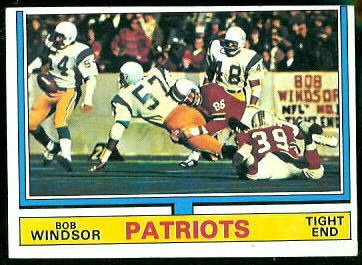 |
| 116 |
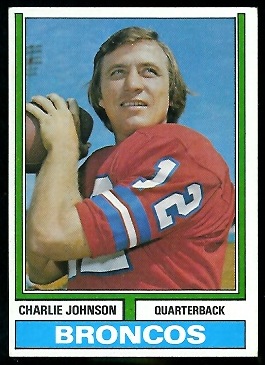 |
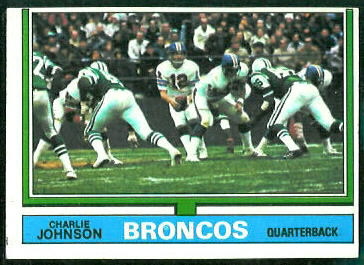 |
| 124 |
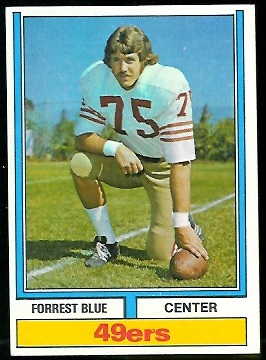 |
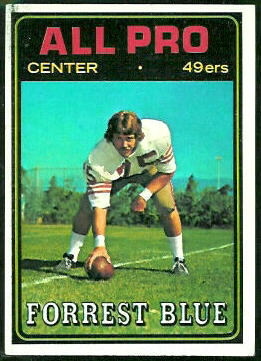 |
| 126 |
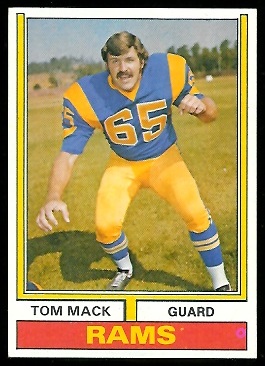 |
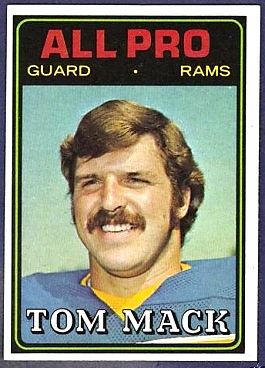 |
| 127 |
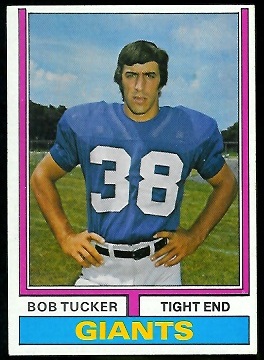 |
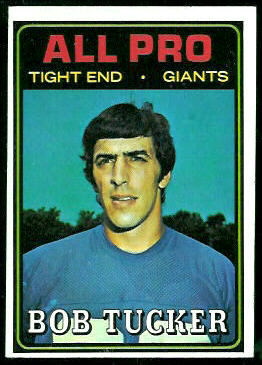 |
Here are examples of the backs. The back on the left appeared on Parker Brothers cards in early editions of the game. The back on the right appeared on regular 1974 Topps cards and on Parker Brothers cards in late editions of the game.
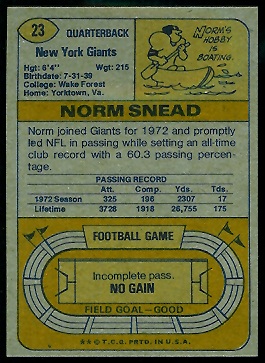
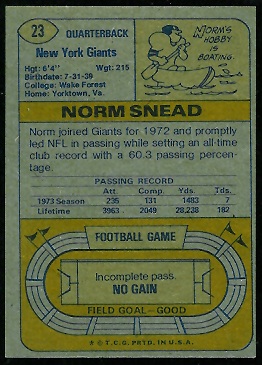
This is a picture of an uncut sheet of 1974 Topps cards that my friend cardbender posted on photobucket. The cards in the block marked in orange correspond to the fifty cards in the Parker Brothers set. You can see that three cards in the block are All Pro cards, and three are action cards, oriented horizontally. These are the six cards that Topps changed for the Parker Brothers set.

Though the Parker Brothers cards are less common than the regular 1974 Topps cards, they don’t appear to sell for a premium. I’m sure that collectors often don’t recognize them; in fact, before writing this article, I went through my own 1974 Topps set and found that three of the cards were actually Parker Brothers cards. You can find some Parker Brothers cards correctly identified on eBay, and you can also find some hiding among the 1974 Topps cards. For most of the cards–all but the six pictured above–you need to see the backs to identify them. Wheatstatecards is one seller who has some unidentified Parker Brothers cards. He includes scans of the card backs in all of his listings, so you can peruse his 1974 Topps listings and look for Parker Brothers cards.
March 30th, 2010 |
Published in
Interesting eBay Auctions
This uncut sheet of 1946 Sears Cleveland Browns cards was on eBay last week. 1946 was the Browns’ first year; they were part of the new eight-team All-American Football Conference. The Browns were the AAFC champions all four years of the league’s existence, 1946-1949, and they joined the NFL when the AAFC folded in 1950. As far as I know, these Sears cards were the only cards printed of an AAFC team.
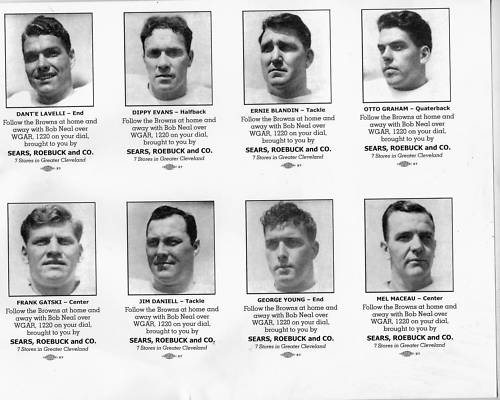
Conspicuously absent from this set are Marion Motley and Bill Willis, African American stars who later made the Pro Football Hall of Fame. According to Willis’s Wikipedia page, the two did not play in the Browns’ 1946 game against the Miami Seahawks, because they were forbidden by law to play against white players in Miami.
This small Sears set contains pre-rookie cards of three other Hall of Fame players: Otto Graham, Dante Lavelli, and Frank Gatski. (For more pre-rookie cards, see my pre-rookie card page.) The black-and-white head shots are nice, but otherwise the cards are unremarkable: all eight have the same ad on the front and the team’s 1946 schedule on the back.
The set is rare–these particular cards are the first I have seen–so it is hard to assign a value to the cards. The highest bid in this auction was $2000, and it did not meet the seller’s reserve. Perhaps the seller will list it again with a better description and a scan that shows the corners of the sheet.
For more interesting auctions, see my other Interesting eBay Auctions articles.
March 6th, 2010 |
Published in
ABCs of Vintage Football Cards, error cards, General Collecting Info, Interesting Message Board Threads
Occasionally you will see uncut sheets of vintage cards up for sale. Studying uncut sheets can give you insight into why some cards are much harder to find than others. For example, by looking at the uncut sheets for a set, you can see why some cards are considered short prints or double prints. For most sets, the price guides indicate which cards are short prints or double prints, and they adjust the cards’ prices accordingly. I say most, because some short prints are not documented–those in the 1964-1967 Philadelphia sets, for instance.
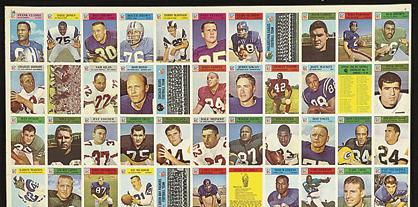
(Image from legendaryauctions.com; click on it to see whole sheet.)
Short prints and double prints are just part of the story. A card’s position on an uncut sheet can also affect its scarcity, because cards on the corners and edges of the sheets were more likely to be damaged in production. I have not seen this factored into price guides’ prices, though: if two common cards were printed in equal numbers, the price guides will usually–if not always–assign them the same price.
The price guides do assign higher prices to the first and last cards in a set, asserting that the first and last cards generally got more wear than the other cards. Supposedly, lots of kids sorted their cards into numerical order, put rubber bands around them, and banged them around. In practice, though, I find that first and last cards aren’t noticeably scarcer in high grades than the other cards, unless they happened to be on the corners and edges of the sheets.
A recent–and timely!–thread in the Collectors Universe forums includes pictures of numerous uncut baseball card sheets and a nice discussion about short prints and double prints. The thread shows the patterns that the card companies used when arranging cards from sets of different sizes on the sheets. Depending on the size of the set (or series within a set), the card companies repeated rows of cards on the sheets in different patterns. I recommend reading the thread.
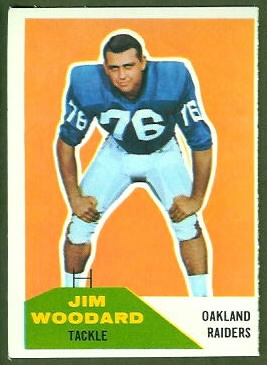 Pictured here is the card I always use as an example of one that is scarce because of its position on the sheet. It’s a 1960 Fleer Jim Woodard card, and it was in the bottom-left corner of the sheet. The Woodard is easily the toughest card in the set–PSA has graded only four of them 7 or better–and a PSA 8 would sell for hundreds of dollars on eBay. Most other PSA 8 1960 Fleer commons sell for $10-20.
Pictured here is the card I always use as an example of one that is scarce because of its position on the sheet. It’s a 1960 Fleer Jim Woodard card, and it was in the bottom-left corner of the sheet. The Woodard is easily the toughest card in the set–PSA has graded only four of them 7 or better–and a PSA 8 would sell for hundreds of dollars on eBay. Most other PSA 8 1960 Fleer commons sell for $10-20.
Over the past year, I have put together a number of “virtual” uncut sheets in the Vintage Football Card Gallery, including one for the 1960 Fleer set. I have included a little discussion for each sheet, as well. Rather than repeat the information here, I’ll just point you to the pages for the sheets:
Here are more of the ABCs:
December 30th, 2009 |
Published in
New in the Gallery
Yesterday I put together more virtual uncut sheets, this time for 1968 Topps football cards. Again you can see that cards on the corners and edges of the sheets are the toughest to find in high grade.
(Click on the image to see the sheets.)
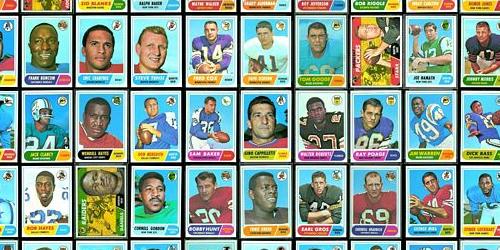
December 2nd, 2009 |
Published in
New in the Gallery
Today I assembled another virtual uncut sheet, this time for 1966 Philadelphia football cards. Those who collect the set know that some cards are much tougher than others. It appears that the cards in some rows were short printed.
(Click on the image to see the sheet.)
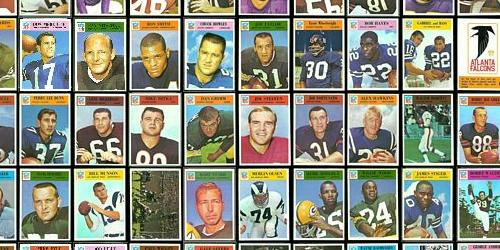
November 12th, 2009 |
Published in
Football Card Trivia, New in the Gallery
Today I put together another virtual uncut sheet page, this time for 1969 Topps football cards. The page includes both the first and second series sheets. These are the first sheets I’ve seen where half of the cards were printed upside down.
(Click on the image to see both full sheets.)
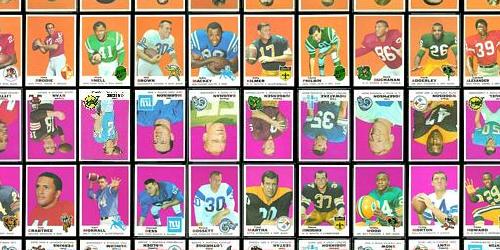
October 8th, 2009 |
Published in
New in the Gallery
Today I put together another virtual uncut sheet, this time 1960 Topps. As usual, it turns out that the toughest cards to find in high grade are the ones on the corners and edges of the sheet. Anyone know why some team cards are oriented one way on the sheet, and some are oriented the other way?
(Click on the image to see the whole sheet.)
